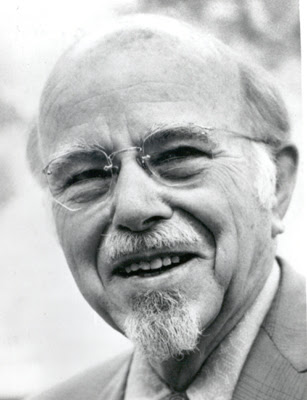Why Counting Churches is Fundamental but not the Whole Deal
 The idea of Saturation Church Planting/DAWN-type ministry was birthed by Donald McGavran, the father of the Church Growth Movement. Here is a brief excerpt from his landmark Understanding Church Growth (page 7):
The idea of Saturation Church Planting/DAWN-type ministry was birthed by Donald McGavran, the father of the Church Growth Movement. Here is a brief excerpt from his landmark Understanding Church Growth (page 7):
"The multiplication of churches nourished on the Bible and full of the Holy Spirit is a sine qua non in carrying out the purposes of God. . . Though God's triumphant reign will not come in its fullness until Christ returns in power, it is clear that in this era the more who love Christ and live “in him” as part of his body, the more goodness and truth will prevail in their communities. Righteousness and peace will surely spread as sound churches multiply throughout the more than three billion persons who feel no allegiance to Jesus Christ".
The Example of Brazil
How was this manifest in Brazil? The Protestant church began to grow vigorously in the early 1980's, averaging 2-3 times the population growth. At the Global Congress on World Evangelization (the AD2000 Movement in 1995 in Seoul), the Brasil 2010 Project, later renamed Brasil 21, officially set the goal to see an evangelical church within easy access of every Brazilian. Brazil is immense and its regions very diverse-- with small river villages in the Amazon basin to mega-cities in the Southeast. It would be hard to set goals and carry out processes in all parts of the country simultaneously.
Broad institutional participation would also be a challenge as there are million-member denominations with little felt need for partnership with others. Yet the need for systematic church planting was recognized, so goals were set and the Project was begun:
- A church for every 1000 people in each town and urban neighborhood would require about 180,000 churches
- A church in every river community (estimated 42,000)
- A church in every rural village (30,000)
- A total of 250,000 churches by 2010, meaning180,000 new ones in the right places
By 2010 there existed in Brazil about 205,000 churches (source: Operation World). Yet, the goal of 250,000 churches in the locations listed above had not been met. More than 100,000 new churches were still needed to reach that aspect of the goal. Here are some reasons for the failure:
- Much of the church multiplication occurred near existing churches.
- Little emphasis was placed on crossing cultural and geographical barriers.
- The greatest need for churches was in areas from which people were migrating and not to which they were moving, meaning a missionary call needed to be received and recognized to move against the natural immigrant flow.
Here now is a summary of the current situation (2019):
- About 25% of the population is Protestant (evangélicos) and 85% to 90% of the population calls itself Christian (including nominal, Orthodox and Catholic).
- Violence and corruption continue at every level of government and society.
- Crime and drug use are ubiquitous.
- Although Protestant church growth continues to be strong, there is weak evidence of true Kingdom transformation, often even among those who consider themselves devout followers of Christ.
Other Examples
Here are a few examples of similar SCP/DAWN results in other countries:
- In the Philippines the SCP/DAWN numerical goal of 50,000 was exceeded in the year 2000 (i.e. 51,286), but not the access goal. Twenty-six thousand barangays, where 39 million people lived, still had no church.
- The evangelical Protestant population of Guatemala is estimated to be around 40 percent, making it the most Protestant country in Latin America. However street crime in all of Central America is rampant.
- El Salvador is considered one of the most violent countries in Latin America but has an evangelical church for every 600 people.
- 76% of Zimbabweans are associated with a Protestant church, yet who would argue that the social and governmental structures of Zimbabwe truly incarnate the Kingdom of Jesus?
So, what should Kingdom goals be? Counting churches is not enough. Nearly 60% of the new churches the world needs today must be planted among Unreached People Groups. UPG thinking must be meshed with SCP thinking, and it all must be infused with the expectation of Kingdom transformation.
National churches may be stretched to plant sufficient churches to reach the cultural/ethnic/social groupings within their own borders. This is natural multiplication. Reaching the unreached requires supernatural, cross-cultural calling, whether by national or international workers. Workers from abroad need to focus on the unreached, but they often do not. For transformation, the whole Gospel must be preached. What does God expect and desire from His church – justice, honesty, generosity, love.
"The world cannot be understood without numbers. And it cannot be understood with numbers alone." (Hans Rosling)
In Summary
There is no real evidence that more churches were planted as a result of the Brazil 21 effort. In fact, the growth rate may have declined during the time the Project was most active (i.e. the growth rate had already been quite high before the process began) thus the church, researchers, and/or mobilizers should not take undue credit. However, the research and goal setting process in Brazil did have some positive results. Awareness of the need for new churches and where to plant them was affirmed. The reality was articulated and shared using sampling from different contexts, tying that to known census data. Where good research happened, churches and missions targeted the most needy regions. In addition, God has recently ignited believers from different parts of the country with a desire to address the overlooked (fisherman, river people, quilombolas, hippies, gypsies, etc.). The Research Department of the Brazilian Association of Cross Cultural Missions now focuses on these groups.
However, many cultural and social groups remain unreached. Brazil may be too large to bear a single nation-wide effort. There frequently exists a divide between those who multiply churches, those committed to cross-cultural missions and those committed to transformation, with little interchange or openness to cooperate between them.
How do we avoid these pitfalls? Set the right goals. Be humble, for it is God who brings the increase. And start with the righteous end in mind, with God-honoring social structures and healthy churches active in every arena. Using the paradigm of the Lausanne movement, let's measure what will lead to planning for the evangelization of every individual, for the number of new churches, for number of Christlike leaders, and for impact in every sphere of society. Let's measure and plan for the whole deal.
Here's a link to a video on “How to Develop a Prophetic Message from Research Information” created by Russ Mitchell, a member of the Global Research Team of OC International: https://vimeo.com/onechallenge/review/300568969/103b5b6651
Perhaps you will find it useful in knowing what to count and how to count it.
This article by Larry Kraft first appeared in the CMIW Bulletin, Volume 9, Number 1, January 2019
- Log in to post comments
